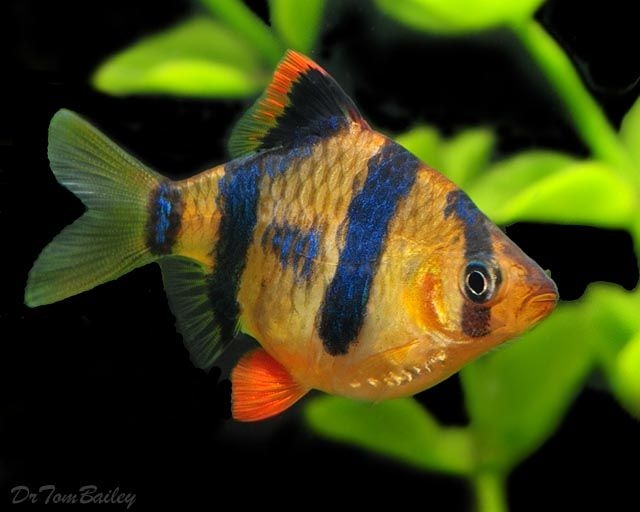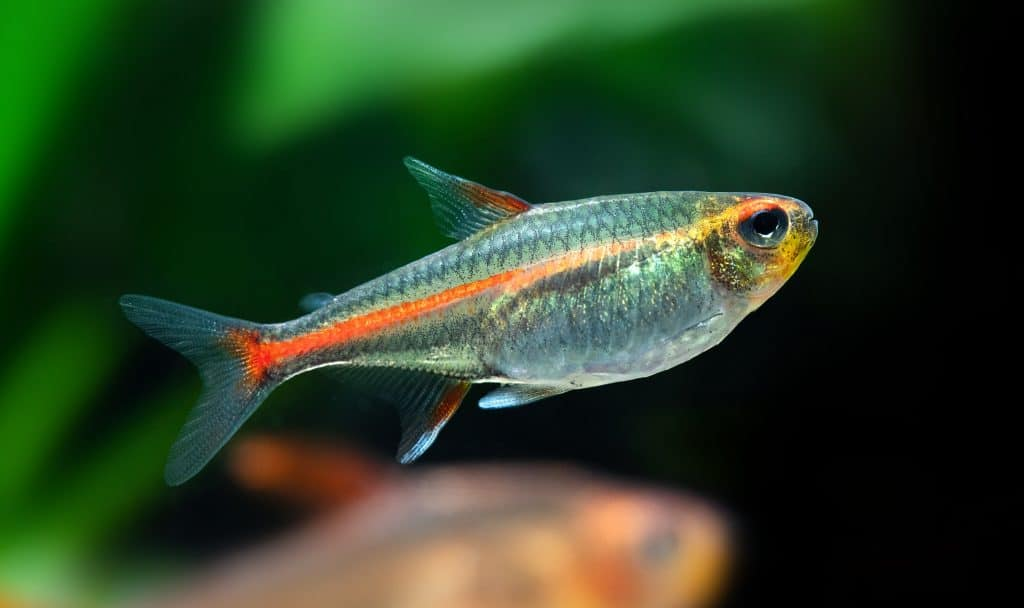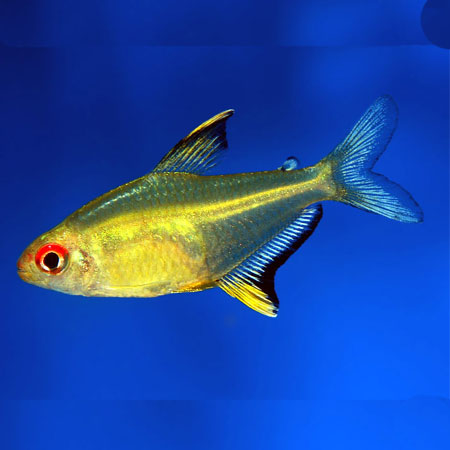The Malawi Eye Biter (scientific name Dimidiochromis compressiceps) is a visually stunning and captivating species from the family Cichlidae. Native to the waters of Lake Malawi, Lake Malombe, and the upper Shire River in East Africa, this fish is not only admired for its brilliant colors and intricate patterns but also its fascinating behavior and unique tank requirements.
Quick Facts
- Scientific Name: Dimidiochromis compressiceps
- Common Name(s): Malawi Eye Biter, Compressiceps
- Family: Cichlidae
- Origin: Lake Malawi, Lake Malombe, and the upper Shire River, East Africa
- Price Range: $10–$20
- Lifespan: 8–10 years
- Full Size: 6–8 inches
- Care Level: Advanced
- Breeding Level: Expert
- Sex Differences: Males have more vibrant colors and longer fins than females
- Tank Size: Minimum 55 gallons (larger preferred)
Appearance
The Malawi Eye Biter is an eye-catching species with vibrant colorations that make it stand out in any aquarium. Its body features a mix of deep blues, yellows, and blacks, complemented by vertical stripes that seem to shimmer in the light. The tail and fins showcase bright yellow and orange hues, further enhancing its visual appeal. Males are generally more vibrant and possess longer fins compared to females.
Tank Setup and Water Parameters
- Ideal Tank Size: At least 55 gallons (larger tanks recommended for groups or to accommodate aggressive behavior).
- Water Parameters:
- pH: 7.8–8.6 (slightly alkaline)
- Temperature: 78–82°F (25–28°C)
- Hardness: 10–20 dGH (moderately hard water)
- Habitat Preference:
- Mid-water dwelling fish that prefer open swimming areas.
- A tank with rocks, plants, and ample open swimming space is ideal for replicating their natural habitat.
- The addition of visual barriers, like rocks, can help manage territorial disputes.
Behavior and Tankmates
- Temperament:
- Aggressive and territorial, especially during breeding periods.
- Can be combative with other fish, especially in smaller tanks.
- Prefers to establish a clear territory within the aquarium.
- Ideal Tankmates:
- Other aggressive cichlids such as Mbunas or Haplochromines that can tolerate its temperament.
- Best kept with similar-sized, robust species that can withstand its territorial nature.
- Fish to Avoid:
- Peaceful community fish like Neon Tetras or Guppies are unsuitable due to the Eye Biter’s aggression.
- Smaller or slower fish may be targeted by this species.
Diet and Feeding
The Malawi Eye Biter is carnivorous and requires a meaty diet to thrive in captivity. Common food options include:
- Whitebait
- Cockles
- Cichlid pellets enriched with protein
- Frozen or live foods such as brine shrimp or bloodworms can be offered as treats.
It is essential to feed the fish a varied, protein-rich diet to maintain its health and vibrant coloration. Avoid feeding excessive amounts of plant matter, as these fish are predominantly carnivorous.
Breeding
- Breeding Level: Expert
- Breeding Behavior: Like many cichlids, the Malawi Eye Biter is a maternal mouthbrooder, where the female incubates the eggs in her mouth until they hatch.
- Sexing: Males are usually more vibrant and have longer fins, while females are generally less colorful.
- Challenges: Given their territorial nature and specialized breeding behaviors, breeding them successfully requires a very stable environment and careful management of tankmates.
Health Considerations
- Diseases:
- The Malawi Eye Biter is susceptible to Malawi Bloat, a condition that can occur in cichlids if water quality is poor or the fish is overfed.
- Other common cichlid-specific diseases, such as Ich or Fin Rot, can also affect this species if tank conditions are not kept optimal.
- Prevention: Regular water changes, high-quality food, and maintaining a stress-free environment are key to preventing illness.
Conclusion
The Malawi Eye Biter is a beautiful and intriguing cichlid species that demands a dedicated aquarist who can meet its care requirements. With its vivid coloration and aggressive behavior, it is best suited for advanced hobbyists who have experience managing territorial cichlids. If properly cared for, this fascinating fish can live for 8 to 10 years and bring a bold, dynamic presence to your aquarium.




Reviews
There are no reviews yet.